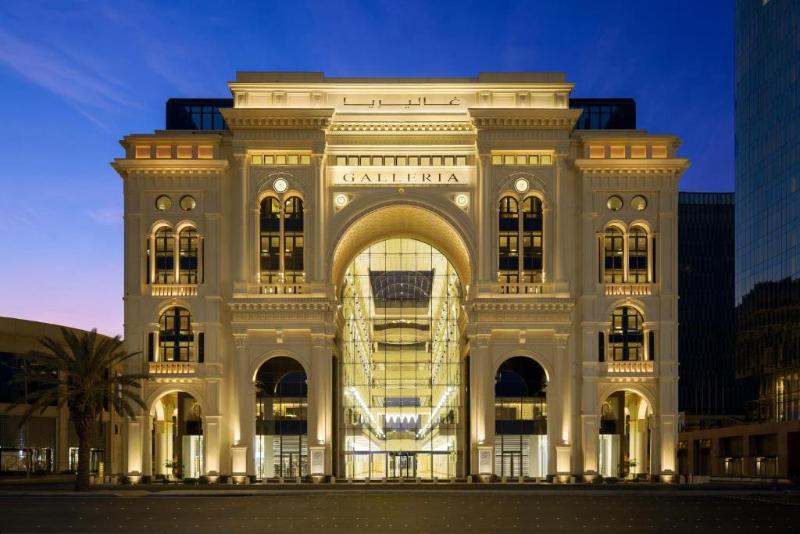Vision 2030 Saudi Arabia
The goal is to create a society where every person has a happy, fulfilling life, supported by a quality of life that includes a safe environment for families as well as access to world-class healthcare and education.
When was Saudi Vision 2030 launched?
Launched in April 2016, the ambitious 2030 goals largely reform the Saudi economy and society. Described as a bold blueprint for creating an exceptionally bright destiny for Saudi Arabia,
Saudi Vision 2030 aims to reduce Saudi Arabia’s dependence on oil and diversify its financial system. The state is looking at the development of public service sectors, including health, education, infrastructure, sports, and tourism.
Total budgeted for vision 2030
Since the announcement of Saudi Arabia’s Vision 2030 plan, nearly $1 trillion worth of development projects have been initiated or announced. However, this amount represents only a third of the total investment.
Vision 2030 summary key
Vision 2030 is built around three primary themes:
A colorful society: Life expectancy, urbanization, culture, and entertainment, sports, umrah, UNESCO historic places
A prosperous economic system: Women in the workforce, non-oil exports, public investment fund, foreign direct investment, and international competitiveness
A country with ambitions: Government efficiency, e-government, household income and savings, non-profits, and volunteerism are factors besides oil revenue.
Opportunities for foreign capital investment
Saudi Arabia has made significant progress in making it easier for foreign investors to invest in the country, including reducing the total requirement for investment licenses. Enabling the transfer of real estate ownership was possible in 60 minutes and the number of restricted chemicals was reduced by 73% to facilitate the import process.
Foreign Investment Policy in Saudi Arabia
The most significant goals of the Kingdom’s Vision 2030 are to improve economic levels and diversify sources of income. The Saudi administration has worked hard to entice international investors to invest in the country. It has imposed restrictions and controls on foreign investment (herein) to fulfill the desired objective of protecting the rights of investors.
Regulations on Foreign Investment Licensing
- In order to get a company start-up license in the Kingdom, a foreign investor must first secure work permits.
- The Ministry is in charge of encouraging investment in the Kingdom of Saudi Arabia, establishing and monitoring foreign investment legislation, as well as facilitating investor admission, and providing permits.
- There are many sorts of investment licenses available, each with its own set of conditions, such as minimum acceptable capital and a foreign capital ceiling.
- Interested parties can apply for a license through the Ministry of Investment’s website.
Mega projects under Vision 2030.
New city plan and entertainment sector
Saudi Arabia continues to strive for economic, social, and cultural diversity. In 2016, Crown Prince Mohammed bin Salman ordered the development of a long-term prosperity model for the Kingdom. The biggest development projects so far are Qiddiya Entertainment City, NEOM, Red Sea Project, and Amaala Resort. The changes are part of Saudi Vision 2030, the crown prince’s ambition to diversify the economy.
NEOM
The NEOM project is being developed in northwest Saudi Arabia with $500 billion in investment and support from the Public Investment Fund (PIF). The origin of the name is a combination of the Latin word “neo” meaning “new” and the first letter “m” of the Arabic word “mustaqbal” meaning “future”. NEOM, announced in 2017 and in a new location on the Red Sea, is expected to focus on luxury living. The project will include multiple cities, airports, seaports, tourist areas, industrial complexes, and “innovation hubs”.
NEOM Company is fully owned by the Public Investment Fund (PIF) and will develop the massive project. NEOM’s economic potential will focus on 16 sectors: energy, water, mobility, biotech, food, manufacturing, media, entertainment, culture, and technology.
Investment
The project will attract investment and give a significant boost to Saudi Arabia’s economy, expected to add 380,000 jobs and USD 48 billion to GDP by 2030.
NEOM Green Certificate:
- No cars
- A pedestrian-first concept
- Maximum commuting time: 20 minutes
- Green areas
- Powered entirely by renewable energy
- Infrastructure for smart cities
Qiddiya entertainment city
Qiddiya will be Keydia will be a game-changing location known for providing the most creative and engaging experiences on the global stage. a disruptive destination recognized as home to the most innovative and immersive experiences on the world stage.
Qiddiya most attractive activities
Some of the fun attractions include family-friendly theme parks, sports stadiums fit for international competitions, sports and art academies, concert and entertainment venues, racetracks for motor-sports lovers, nature and environment experiences, and outdoor and adventure activities.
Qiddiya future plan
The area is expected to attract 17 million visitors annually by 2030 and contribute up to SR 17 billion to the country’s gross domestic product by 2030, providing 25,000 jobs.
The project, in its initial development phase, currently employs about 500 workers, 60 percent of whom are Saudi nationals.
Qiddiya will have various real estate options as well as community services.
About three times larger than Walt Disney World, Kidia is planned to be the largest entertainment city in the world.
Experience under five of them:
- Sports and wellness
- Park and attraction
- Motion and mobility
- Art and Cultural
- Natural and environment
The Red Sea project: luxury in an extraordinary destination
One of the world’s largest travel and hospitality initiatives is the Red Sea Project. The project aims to create a stunning ultra-luxury resort within a pristine 28,000 sq km region that is home to more than 90 islands, volcanoes, deserts, mountains, and other natural and cultural wonders. Using the highest standards of service quality and state-of-the-art technology, this initiative aims to set new benchmarks for sustainable development and environmental conservation. With a projected annual visitor count of 10 million and a GDP contribution of SR22 billion, it is expected to create 70,000 jobs and contribute significantly to the Kingdom’s economic diversification.
The goal of the Red Sea Project is to rely on some of the Kingdom’s unique natural resources.
include the red sea project:
- A planned luxury nature reserve that spans 22 of the 92 uninhabited islands.
- The fourth largest barrier reef system in the world
- 3000 luxury and ultra-luxury resort, airport, yacht marinas, and other facilities
AMAALA: The Riviera of the Middle East
Saudi Arabia has launched the Amala economic development project, which will create an expected 22,000 jobs across hospitality and tourism, leisure and retail. Amala will be a significant driver of domestic and foreign direct investment, stimulate economic growth and job creation in Saudi Arabia’s northwest coast.
Amala’s goal is to become an ultra-luxury resort and wellness destination, ensuring sustainability and preservation.
How can Amala compete with other luxury international locations?
Amala will offer a variety of lifestyle experiences that will elevate luxury to previously unknown levels. One of the world’s few intact marine ecosystems is the Red Sea’s coral reefs. Amal’s natural opulence and distinctive heritage, which includes several breathtaking geological and historical landmarks, make it stand out.
Who will travel to the spot?
They expect it to become a desirable holiday destination for ultra-luxury travelers, focusing on wellness, healthy living, and meditation, in the region and beyond. The destination also expects to boost domestic tourism, especially with the current focus of the Saudi Vision 2030, to enhance it.
How does the (PIF) plan to fund commitments?
The Public Investment Fund (PIF), which will oversee Amala’s development, will contribute to the first seed investment. The balance of the project will be open to investment by private sector businesses and market investors.
How big is the Amala project and how many apartments are expected?
Amala will be built on three sites within the Prince Mohammed bin Salman Natural Reserve on the northwest coast of Saudi Arabia.
Over 2,500 hotel keys and 700 residential villas, flats, and estate houses will be the centerpiece of the development. Which will spread over an area of over 3,800 square kilometers.
How will development affect the delicate ecosystem of Red Sea coral reefs?
The sites offered will focus on sustainable and sustainable agriculture, solar energy generation, and other elements that do not endanger or damage delicate marine habitats and reduce sustainable and ecological features.
King Salman Park–The green land of Riyadh
Saudi Arabia has officially launched the new 13 million square meter King Salman Park, aimed at becoming the largest city park in the world. The park will be four times the size of New York’s Central Park.
The modern green park of the future
King Salman Park is one of four megaprojects in Riyadh launched by the Custodian of the Two Holy Mosques, King Salman bin Abdul Aziz, on 19 March 2019.
The park aims to provide residents with a variety of sporting, cultural, artistic, and recreational options. Visitors to Riyadh are, therefore, in line with the Saudi Vision 2030 goals of a vibrant and healthy society to improve the city’s quality of life.
King Salman park area
The park, which will cover an area of over 16 km2, will be a destination for art, culture, sports, entertainment, and innovation in a natural environment. Future generations of Saudis will gather at King Salman Park to be productive, innovative, and creative.
King Salman park project cost
These initiatives are expected to cost $23 billion in government support and will leverage $15 billion in private sector development.
King Salman park: A variety of facilities
- There are about 9.3 million square meters of green space and open space, including an Islamic-style garden, vertical gardens, a labyrinth garden, and a bird and butterfly sanctuary.
- A national theater with a capacity of 2500 people.
- 5 museums of various sizes
- There are seven museums in total: The Aviation Museum, the Astronomy and Space Museum, the Science Museum, the Museum of Plants, the Virtual Reality Museum, and the Architecture Museum.
- A Royal Gold Course spanning 850,000 square meters
- A sports complex of 50,000 square meters.
- An 80,000-square-meter environmental, cultural, and educational center with interactive shows, multi-purpose halls, a conference room, a plant nursery, coffee shops, and restaurants.
- Residential complexes with 12,000 dwelling units
- Mosques, police, medical, educational, and social services
Vision 2030 offers countless opportunities to companies,
https://www.arabnews.com/node/2131176/business-economy
Mohammed bin Laden, president of the Saudi-French Business Council, said Vision 2030 created a lot of opportunities for foreign investment. France is the largest European investor in Saudi Arabia and the third largest in the world. Representing about 10 percent of its foreign direct investment. Bin Laden: French parties know that investing in a state is sometimes complicated but never risky. They look forward to opportunities and future privatizations that are seen as growth drivers.



Comment (0)